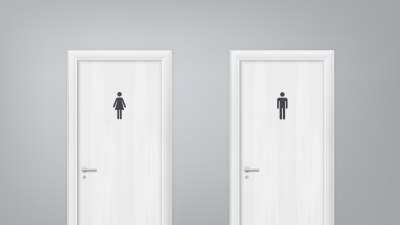Nothing Says Culture Shock Like a Foreign Public Toilet
Explore the humorous and eye-opening experiences of using public toilets abroad.

Image by macrovector on Freepik
Traveling to foreign countries can be an exciting adventure full of new experiences, but one aspect that often leaves tourists baffled is public restrooms. Nothing encapsulates the term 'culture shock' quite like the encounter with a foreign public toilet. From quirky designs to bewildering practices, using these facilities can turn into an unforgettable experience. In this article, we will delve into the various aspects of public toilets around the world that make them unique and often challenging for travelers.
The Design Dilemma
One of the most noticeable differences in public toilets globally is their design. In countries like Japan, public toilets are often high-tech and come equipped with buttons for every imaginable function—from the temperature of the seat to the strength of the bidet spray. Flushing may be operated by foot pedals, motion sensors, or, more traditionally, a handle. On the other hand, in some more rural areas in countries like India or parts of Southeast Asia, you may encounter squat toilets. These require not only a different technique but also a level of balance and coordination that many Westerners are unaccustomed to, leading to potential mishaps!
Hygiene Practices
Entry into a foreign public toilet also raises questions about hygiene practices. In many parts of Europe, you'll find that toilet seats are sometimes absent altogether, replaced by a simple hole in the ground. In contrast, countries in the Middle East might pride themselves on their ablution practices, which often involve washing with water instead of relying solely on toilet paper. Travelers are advised to carry their own supplies, as many public restrooms may only offer minimal resources, fostering a sense of anxiety about cleanliness. This is particularly true in countries where pouring water is preferred over traditional sanitation methods.
Signs and Signals
Language barriers can complicate the restroom experience even further. In some countries, the symbols for male and female can be a source of confusion. Whether it's the abstract representations seen in some Scandinavian nations or the artistic and local touches found in Asia, travelers may find themselves staring at signs, unsure of where to go. Without a clear understanding of the symbols or local language, you may inadvertently walk into the wrong stall, leading to an embarrassing situation!
Paying for the Privilege
In many countries, using public toilets is not just a matter of finding a facility; it often comes with a fee. In places like Italy, Spain, or even parts of the United States, travelers may face a pay-per-use policy that could catch them off guard. Some facilities offer tokens or require coins for entry. This can be particularly frustrating if you are not prepared with local currency, leading to desperate changes of plans or uncomfortable situations in the search for free restrooms.
Unconventional Etiquette
Different cultures have unique etiquette surrounding the use of public toilets. For instance, in countries like Japan, it is customary to remove your shoes before entering a restroom. Conversely, in some Middle Eastern countries, certain customs must be respected within restroom environments that may be incompatible with Western norms. The use of separate facilities for men and women can often be a refreshing simplicity, but sometimes mixed-gender restrooms present their own challenges in terms of privacy and comfort levels.
The Experience of Shared Facilities
Travelers often find themselves in shared restroom facilities, where cleanliness can vary significantly. Some places go out of their way to ensure their toilets are as pristine as possible, while in others, it seems sanitation is an afterthought. Finding a clean toilet can turn into a mini-adventure, where one can compare the various methods used by locals to maintain hygiene in shared spaces. Observing how locals deal with these conditions can provide valuable insight into the culture and lifestyle of the area.
Regional Variations
Public toilet experiences can vary drastically even within one country. In urban areas, restrooms are usually more advanced and clean, while rural ones may lack basic amenities. For example, in Morocco, busy urban centers might have modern facilities, while smaller towns might present an entirely different scenario that requires adventurous spirits. Understanding these regional differences and preparing for them can make your travels smoother and less surprising.
Balancing the Expectation
When traveling, it is always helpful to balance expectations with reality. While some travelers may find it hard to deal with the differing levels of cleanliness or design, adopting a sense of humor can often turn a potentially unpleasant experience into a treasured memory. Every encounter is a learning opportunity, helping one appreciate cultural differences and the ways in which the nuances of basic human needs are handled around the globe.
Tips for Travelers
To ease anxiety over public restroom experiences while traveling abroad, here are several tips to keep in mind:
- Carry your own supplies: Always have toilet paper and hand sanitizer handy, as not all facilities will provide essential products.
- Learn local customs: Familiarize yourself with the toilet etiquette of the country you are visiting to avoid any inadvertent faux pas.
- Be prepared for anything: Whether it’s a squat toilet, pay-per-use, or a high-tech experience, being mentally prepared can lessen the culture shock.
- Seek out recommendations: Use travel forums or apps to find the cleanest and most accessible public restrooms, especially in urban areas.
- Embrace the experience: Keep a positive attitude, as every foreign toilet experience adds to your overall travel narrative!
Nothing encapsulates culture shock quite like the experience of using public toilets while traveling abroad. Each country offers its unique quirks, designs, and traditions surrounding this basic yet essential human experience. Rather than shying away from these encounters, embrace them as opportunities for growth, awareness, and laughter. Ultimately, they play an essential role in the rich tapestry of travel experiences. So, the next time you find yourself entering a foreign public toilet, remember to keep an open mind, have a sense of humor, and look at it as another adventure in your journey!











